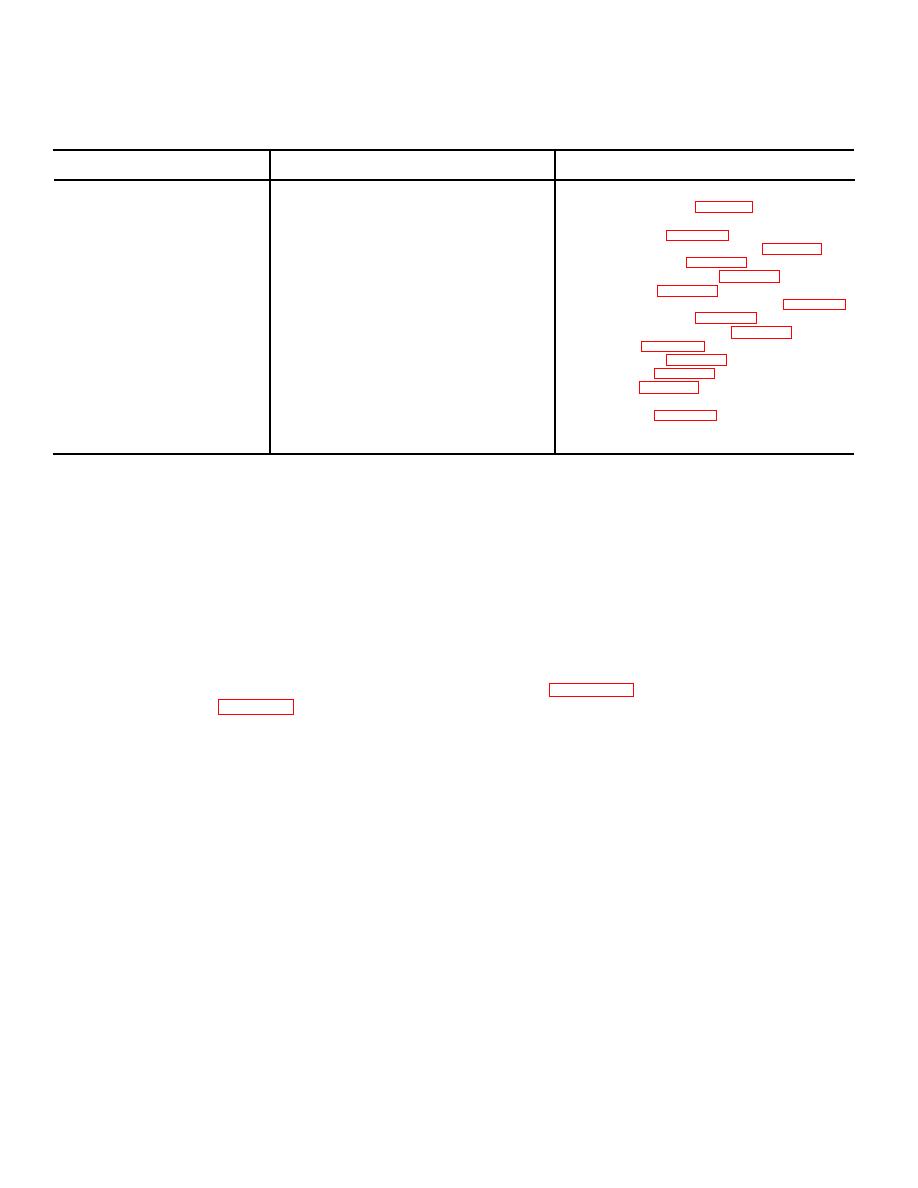
TM 5-3820-233-12/1
Section VI. TROUBLESHOOTING
Table 4-2. Troubleshooting
Malfunction
Probable cause
Corrective action
1.
Starter Fails to Crank Engine.
a. Loose connection or defective wiring.
a. Tighten connection. Check continuity and
replace or repair wiring (para 4-41).
b. Defective starter switch.
b. Replace starter switch.
c. Defective starter.
c. Replace starter (para 4-41).
2. Engine Fails to Start.
a. Clogged fuel line or leaking line.
a. Clean line or replace leaking line (para 4-16).
b. Air cleaner dirty.
b. Service air cleaner (para 3-12).
3. Loss of Power.
a. Defective or clogged injection nozzles.
a. Clean or replace nozzles (para 4-13).
b. Inproper valve adjustment.
b. Adjust valves (para 4-14).
4. Engine Overheats.
a. Thermostat not functioning properly.
a. Test thermostat. Replace if defective (para 4-26).
b. Faulty water pump.
b. Replace water pump (para 4-28).
5. Engine Knocks.
Valve clearance incorrect.
Check and adjust if necessary (para 4-14).
6. Low or No Lubricating Oil Pressure. Defective gage.
Replace gage (para 4-46).
7. Jaw Crusher Capacity Low.
a. Discharge opening not adjusted.
a. Adjust opening (para 4-71).
b. V-belt slippage.
b. Adjust V-belt (para 4-56).
8. Feeder Clutch Slips.
Worn driving plates friction surface.
Adjust clutch (para 4-47).
9. Side and Pitman Bearing Overheats. Plant not level.
Level plant.
10. Conveyor Belt Slipping.
Drive pulley lagging worn.
Replace lagging (para 4-54).
Section VII. RADIO INTERFERENCE SUPPRESSION
functions which are incidental and/or secondary to their
4-7. General Methods Used to Attain Proper
primary function. They consist of external and internal
Suppression
tooth lockwashers used to attach electrical components
Essentially, suppression is attained by providing a low
for better grounding to the frame.
resistance path to ground for the stray currents. The
methods used include shielding the ignition and high
4-9. Inspection of Radio Interference Suppression
Components
straps, with using capacitors and resistors.
Inspect the shielded cable and ground straps for breaks,
cuts, and damage.
4-8. Interference Suppression Components
a. Primary Suppression Components. The primary
4-10. Replacement of Suppression Components
suppression components are those who primary function
Refer to figure 4-1 and remove and replace radio
is to suppress radio interference. These components are
interference suppression components.
described and located in figure 4-1.
b. Secondary Suppression Components. These
components have radio interference suppression
4-3

